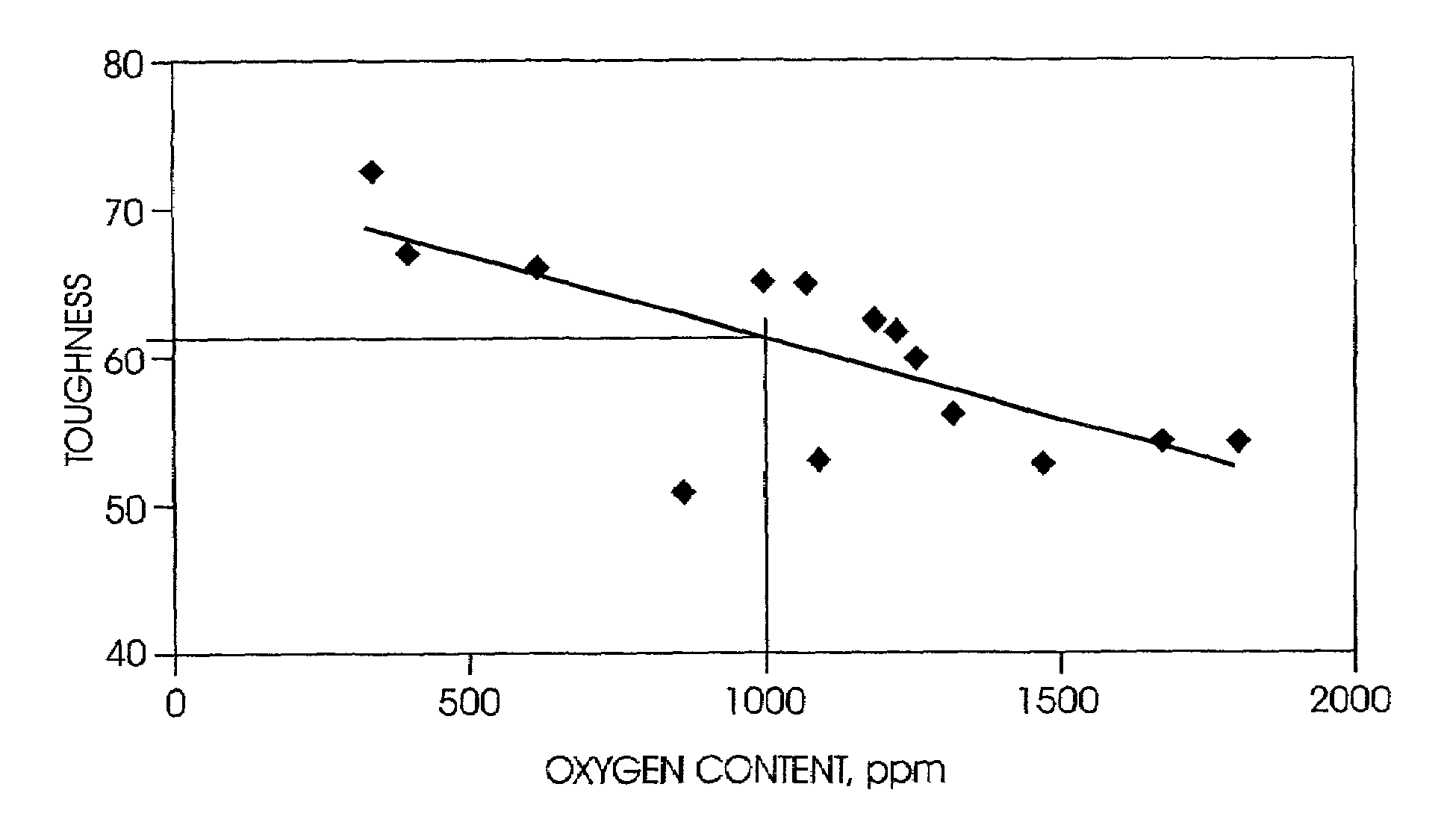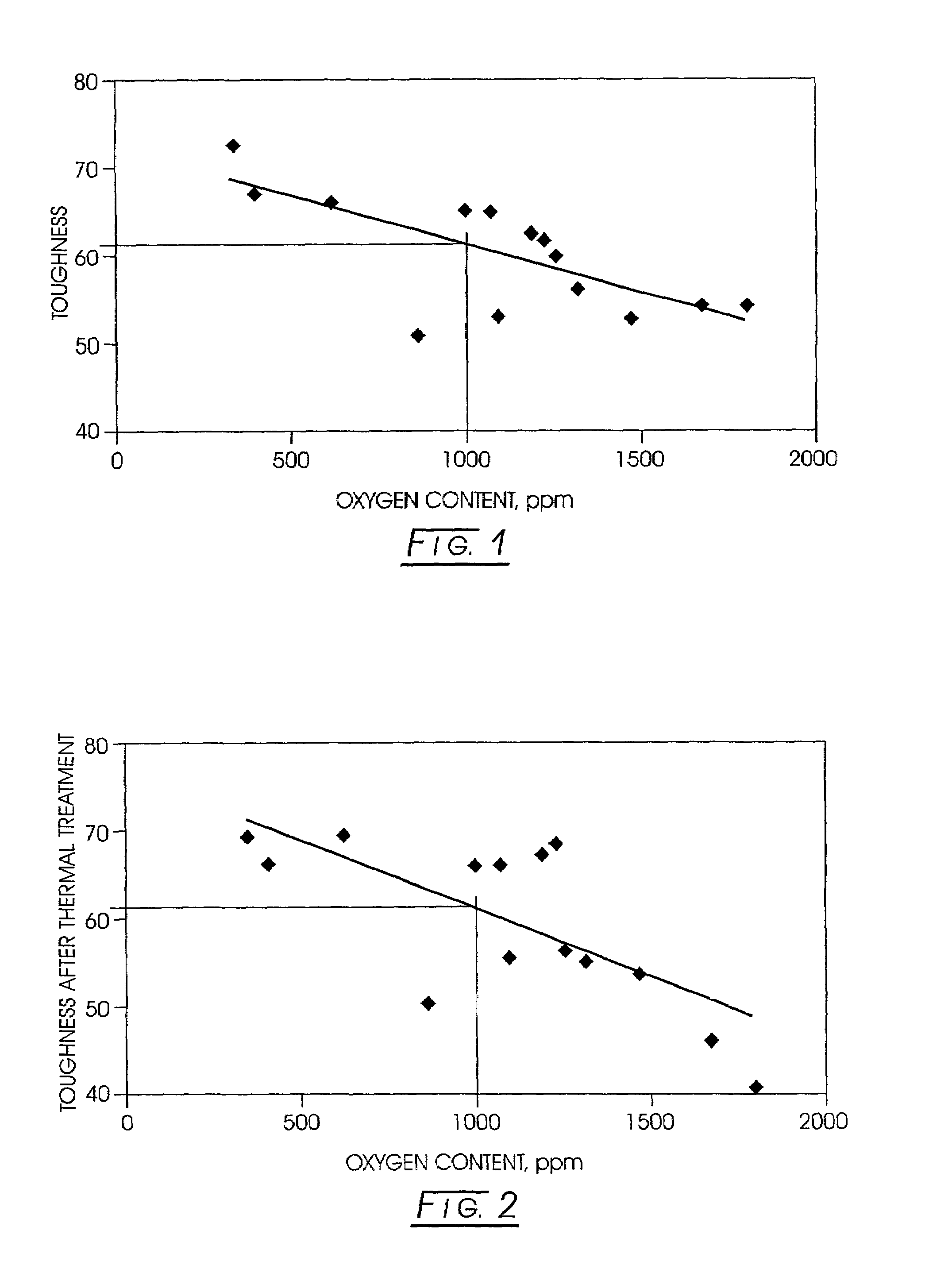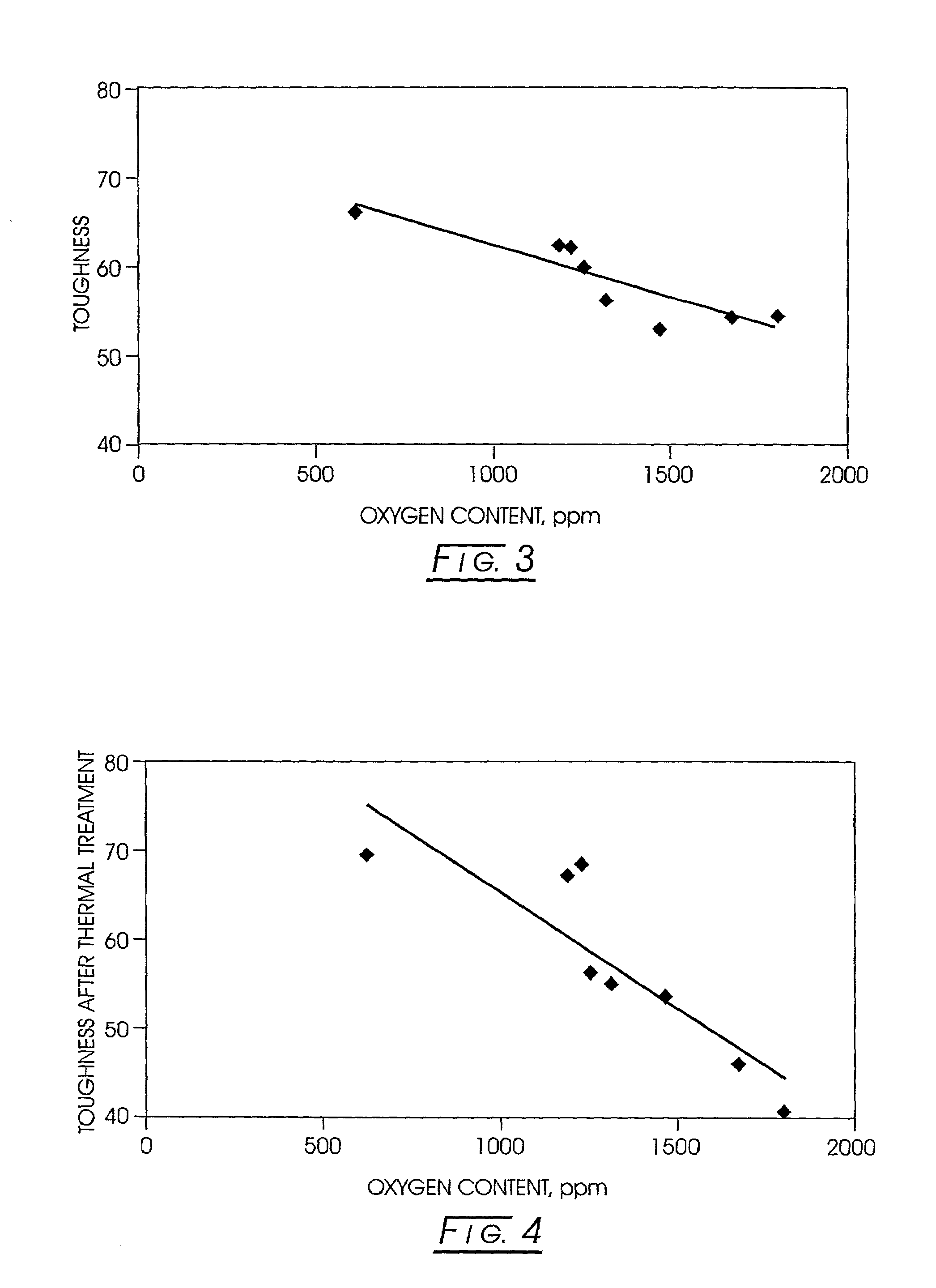Low oxygen cubic boron nitride and its production
a cubic boron nitride, low oxygen technology, applied in the direction of polycrystalline material growth, gel state, crystal growth process, etc., can solve the problem of longer tool life, achieve ultra-low oxygen content, and improve the toughness index of any cbn produ
- Summary
- Abstract
- Description
- Claims
- Application Information
AI Technical Summary
Benefits of technology
Problems solved by technology
Method used
Image
Examples
example 1
[0023]FIG. 1 shows crystal toughness, as measured by a standard toughness test, versus oxygen content, as measured by a LECO oxygen and nitrogen analyzer (Model TC436, supplied by Leco Corporation, 3000 Lakeview Avenue, St. Joseph, Mich.) for a variety of CBN products. These CBN products were made from catalyst systems containing primarily alkali and alkaline earth metal nitrides, amides, hydroxides, and hydrides. Similarly, FIG. 2 shows crystal toughness after thermal treatment at 800° C. for 30 minutes versus oxygen content. Thermal treatment of the CBN product is intended to simulate the thermal profile experienced by the CBN crystals during wheel manufacture. The data for FIGS. 1 and 2 also are set forth in Table 1, below.
[0024]
TABLE 1AverageWeightOxygenAssigned forThermalConcentrationStandardLinearToughnessToughness(ppm)DeviationRegressionIndex (TI)Index (TTI)1091710.00019853.154.61072720.00019365.464.9996370.0007365.664.9856250.001651.149.318031197.06 E-0554.740.816741375.33 E...
example 2
[0026]The materials tested for FIGS. 1 and 2 represent a wide variety of synthesis chemistries, as noted above. If the tests are restricted to materials synthesized using a single chemistry system the influence of oxygen content on toughness becomes more pronounced. Thus TI testing of CBN crystals manufactured using a lithium nitride, lithium hydride, lithium hydroxide catalyst system was undertaken. The results of these tests are displayed in FIGS. 3 and 4, and in Table 2, below.
[0027]
TABLE 2AverageWeightOxygenAssigned forThermalConcentrationStandardLinearToughnessToughness(ppm)DeviationRegressionIndex (TI)Index (TTI)18031197.06 E-0554.740.816741375.33 E-0554.545.61471290.00118953.152.9611500.00466.5681321180.00308656.554.41261800.0015660.155.61225210.00226862.267.21189650.00023762.766
[0028]As shown in FIGS. 3 and 4, the impact of oxygen content on toughness after thermal treatment is particularly high, as can be seen from the slopes of the curves. The improved correlation arises b...
example 3
[0030]In this example, Variant I represents CBN crystals made with a Li3N, LiOH, LiH catalyst system. Variant II represents CBN crystals made with a Li3N LiH catalyst system in which the total amount of Li was the same as in the Variant I runs. Three runs of each catalyst system were conducted. The data recorded is set forth in Table 3, below.
[0031]
TABLE 3Avg.Std.Oxygen (ppm)OxygenDev.MaterialRun 1Run 2Run 3(ppm)OxygenTITTITI–TTIVariant I187918631666180311954.740.813.9Variant II1305131613411321 1856.554.4 2.1
[0032]These results demonstrate that the use of oxygen containing catalysts contributes oxygen to the product CBN crystals, which lowers the TI and TTI of such crystals.
PUM
| Property | Measurement | Unit |
|---|---|---|
| Fraction | aaaaa | aaaaa |
| Fraction | aaaaa | aaaaa |
| Fraction | aaaaa | aaaaa |
Abstract
Description
Claims
Application Information
 Login to View More
Login to View More - R&D
- Intellectual Property
- Life Sciences
- Materials
- Tech Scout
- Unparalleled Data Quality
- Higher Quality Content
- 60% Fewer Hallucinations
Browse by: Latest US Patents, China's latest patents, Technical Efficacy Thesaurus, Application Domain, Technology Topic, Popular Technical Reports.
© 2025 PatSnap. All rights reserved.Legal|Privacy policy|Modern Slavery Act Transparency Statement|Sitemap|About US| Contact US: help@patsnap.com



